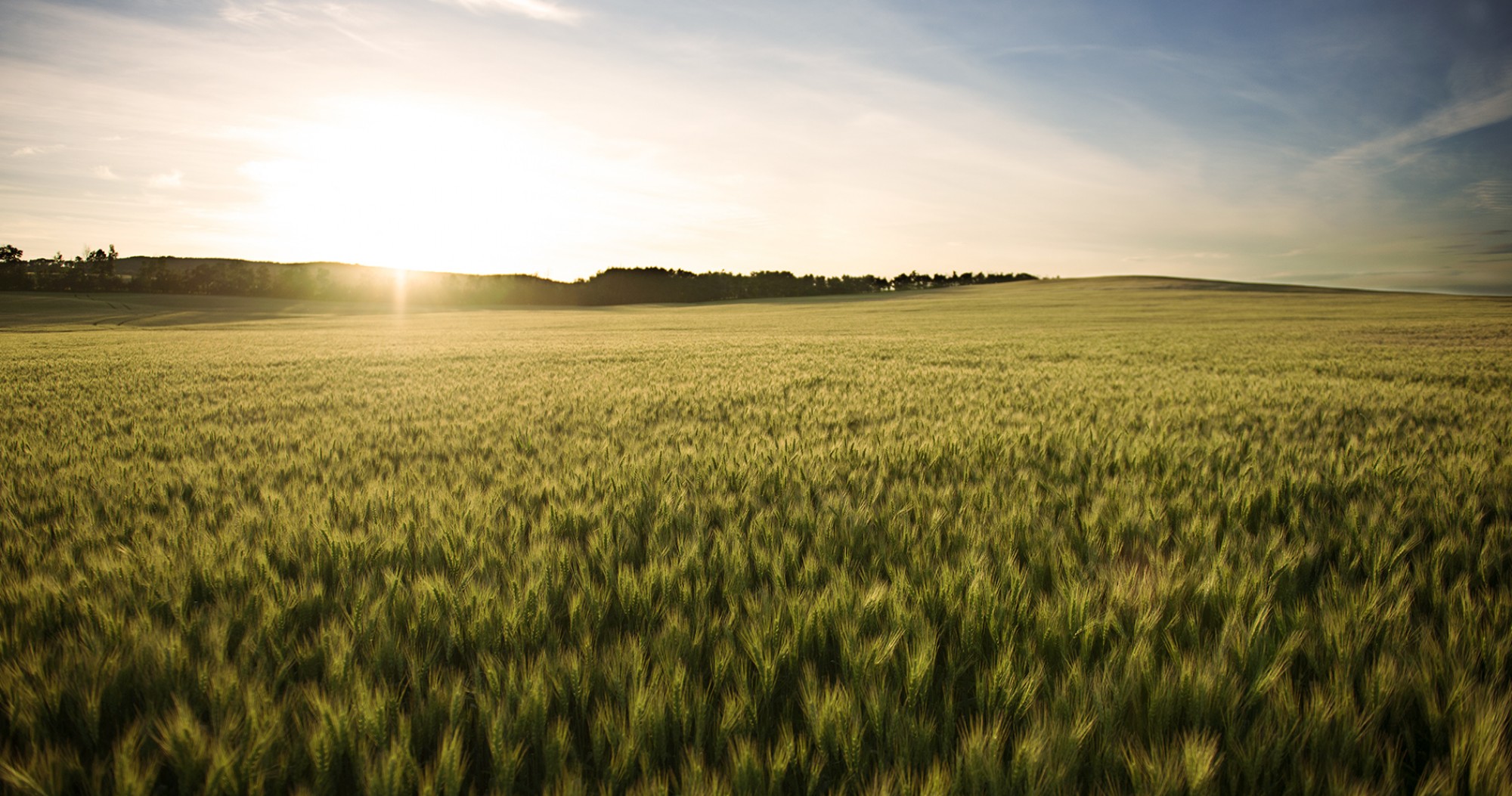Yield components of wheat and barley - dissecting grain yield and their influential factors
If you have tried to estimate the yield of wheat or barley before harvest, you are probably familiar with yield components. Yield components make up the main factors that contribute to yield. The process starts with counting the number of heads in a square foot; then, counting the average number of kernels per head; lastly, estimating the grain weight. Multiplying the three numbers together will give an estimation of grain yield. So, at which growth stage are yield components determined, which factors influence them, and which management practices help maximize them?
Yield = Heads/ft2 x Grains/head x Grain weight
Heads/ft2 = Plant stand/ft2 x Heads/plant
Grains/head = Spikelet/head x Grains/spikelet
Grains/ft2 = Heads/ft2 x Grains/head
The first yield component, heads per ft2, typically has the greatest importance in increasing grain yield.2 4 Heads/ft2 is a product of plant stand and the average number of heads per plant. Plant stand is the number of plants that emerge and establish. It is influenced by soil conditions and seeding practices. Seeding Best Management Practices (BMP), such as early seeding, proper seeding rate and seeding depth, help achieve the recommended target plant stand. For heads/plant, nutrient and water availability during the tillering stage helps with production and increases the survival of yield-contributing tillers.2 The continued availability of resources and minimal stress helps ensure those tillers survive and become yield-bearing. Together, seeding BMP and nutrient management help establish an ideal number of heads/ft2 toward a higher yield.
The second yield component, grains/head is determined by how many spikelets develop on the head, and the number of florets that are fertilized and grow into grains. Spikelet initiation, the process that determines the number of spikelets/head, starts during the tillering stage. By the start of stem elongation (Zadoks GS30), the number of spikelets has been determined. After that, the head continues to grow, and the number of grains per spikelet is determined by the end of flowering.5 7 Head development is a crucial time as limitations of resources, including moisture and nutrients, substantially impact the number of kernels per head.
Grain weight, also known as thousand kernel weight, is the last component of grain yield. The grain filling stage, or Zadoks GS71 to 89, is the critical period for grain weight. The amount and duration of photosynthetic leaf area influence the amount of radiation intercepted, and in turn, the amount of photosynthesis products (glucose) that fill the grain. A foliar fungicide at flag leaf or heading stage protects the flag and penultimate leaves that contribute most to grain yield.2 The plants have peak water needs (7 to 8 millimetres per day) during flowering and grain filling.1 Dry and hot conditions during grain filling stage have a significant impact on grain weight by influencing photosynthesis and reducing the moving of photosynthesis products into the grains.3
The yield components interact with each other and have different importance to grain yield. Multiple studies show, yield increases mainly come from an increased grain number per area (grains/ft2) rather than a higher grain weight.2 4 It can be understood from a storage capacity point of view. Each grain, like a grain bin, has a limitation on its storage capacity. Management practices earlier in the season help increase grain/ft2, establishing a higher total storage capacity. Later in the season, during grain filling, the key is to fill each storage unit (grains) and realize that yield potential. Certain agronomic practices bring benefits to multiple yield components. For example, seeding early gives plants more time to produce tillers, and for each tiller to develop heads, increasing both heads/ft2 and grains/head. Good nutrient management helps canopy development and photosynthesis, benefiting all three components.2
Stay connected through the commissions’ agronomy e-newsletter, The Growing Point, for a closer look at how specific agronomic practices influence yield components.
References
1 Alberta Agriculture and Rural Development. 2011. Crop Water Use and Requirements. Retrieved May 4, 2023, from https://open.alberta.ca/dataset/9a017865-5692-464d-92ac 93b5d50558db/resource/c0d20e0c-9f14-4f6d-8144-b8a6bc3452ba/download/5485851-2011-agri-facts-crop-water-use-requirements-revised-100-561-1-2011-11.pdf
2 Jaenisch, B. R., Munaro, L. B., Jagadish, S. V., & Lollato, R. P. (2022). Modulation of wheat yield components in response to management intensification to reduce yield gaps. Frontiers in plant science, 13, 567.
3 Sehgal, A., Sita, K., Siddique, K. H., Kumar, R., Bhogireddy, S., Varshney, R. K., HanumanthaRao, B., Nair, R.M., Prasad, P.V. & Nayyar, H. (2018). Drought or/and heat-stress effects on seed filling in food crops: impacts on functional biochemistry, seed yields, and nutritional quality. Frontiers in plant science, 9, 1705.
4 Slafer, G. A., Savin, R., & Sadras, V. O. (2014). Coarse and fine regulation of wheat yield components in response to genotype and environment. Field Crops Research, 157, 71-83.
5 FAO. Section 2: Describing the growth of your crop as stages. During which stages is yield determined? Retrieved May 3, 2023, from https://www.fao.org/3/x8234e/x8234e05.htm
6 FAO. Wheat growth and physiology. Retrieved May 3, 2023, from https://www.fao.org/3/y4011e/y4011e06.htm
7 Kansas State University. Wheat growth and development. Retrieved May 3, 2023, from https://bookstore.ksre.ksu.edu/pubs/MF3300.pdf

